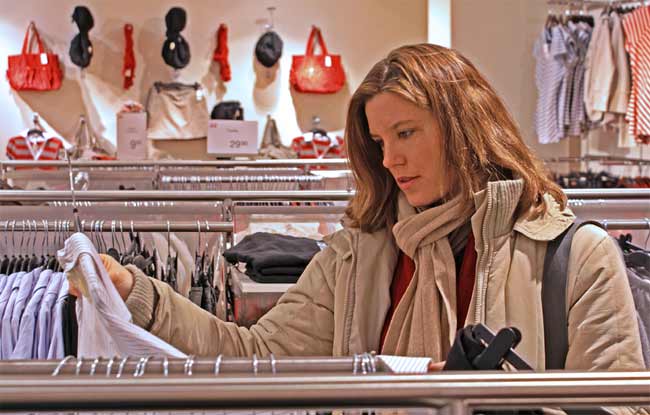Textile ‘DNA’ Thwarts Designer Counterfeits

Glued-on labels and misspelled brand names were once dead giveaways to exposing counterfeit designer goods, but high-end counterfeiters have become far more sophisticated. Today, it can be far more difficult to distinguish designer products from their counterfeit cousins using visual inspection alone. German textile manufacturer Schoeller Technologies has invented a new technology to help keep counterfeit goods off the street. A secret chemical is used to create a unique DNA-like signature called DNAtex that can be instantly verified using a handheld scanner. “We can now give a product a ’unique ID.’ Based on this unique feature, the product can later be clearly identified," Hans Kohn, chief operating officer at Schoeller Technologies, said. “DNAtex was originally developed to protect the company’s own technologies, but “then we realized that we might be looking at a small sensation," Kohn said. He added that consumers and companies should worry about the authenticity of their materials and products for safety — and not only fashion — reasons. "When, for example, a fireman or a motorcyclist is not wearing the safe, original technology, but rather a non-functioning copy, the results may be fatal,” Kohn said. Designers declare war on counterfeiters
While unwittingly buying fake designer goods may not be life-threatening in most cases, it is a waste of money and can undermine the reputation of the designer, Schoeller said. Damage resulting from copies and fake products worldwide is estimated to be between $280 million and $420 billion, he added. Designers are getting serious about battling counterfeiters. Last summer, Christian Louboutin, the designer renowned for its red-soled shoes, began conducting raids in Chinese factories and warehouses around the world, resulting in the destruction of thousands of pairs of fake Louboutin shoes. In August, 20,000 pairs of True Religion jeans were seized after arriving at the Port of Long Beach from China. The True Religion label on each pair of jeans was covered with another label that read, “Tough–Made in the USA” in an attempt to fool the agents, U.S. Customs officials reported. The jeans’ street value was estimated at $1.5 million. Last week, Burlington Coat Factory agreed to pay the Italian design house of Fendi $10 million for selling counterfeit Fendi bags at its retail locations. Even China, the counterfeit capital of the world, has announced the government will "launch a special campaign to fight intellectual property rights infringement and the manufacture and sale of counterfeit goods" in an attempt to improve its image abroad. How it works DNAtex is the first chemical tool available to manufacturers to protect their products. How this identification is made, when and how it is integrated into a product and who is interested in DNAtex is confidential, a Schoeller spokesperson told TechNewsDaily. "DNAtex is fake-proof and it is intended to be kept so," Kohn said. The detection of a fake jacket, pair of jeans, shoe or bag using DNAtex is made possible through a small electronic scanner. "You scan the identified product with the detector. It looks for this unique ID and emits clear signals: a green light for real or red light for fake," Kohn said. Checks of this kind can be carried out at customs, for example, so that counterfeit goods can’t get into circulation. DNAtex has no effect on color, look, feel, breathability or functionality of a product, the company says. It can be applied at all stages of production, from adding to chemicals during the manufacture of textiles to applying to a finished product. The company reports its DNAtex is currently being used by manufacturers, but would not reveal their identities, citing its obligation to protect its brand partners.
- How to Spot a Fake Cell Phone
- New Research Reveals How DNA Could Power Computers
- Seven Modern Day Technologies Sparking Controversy
Get the world’s most fascinating discoveries delivered straight to your inbox.



